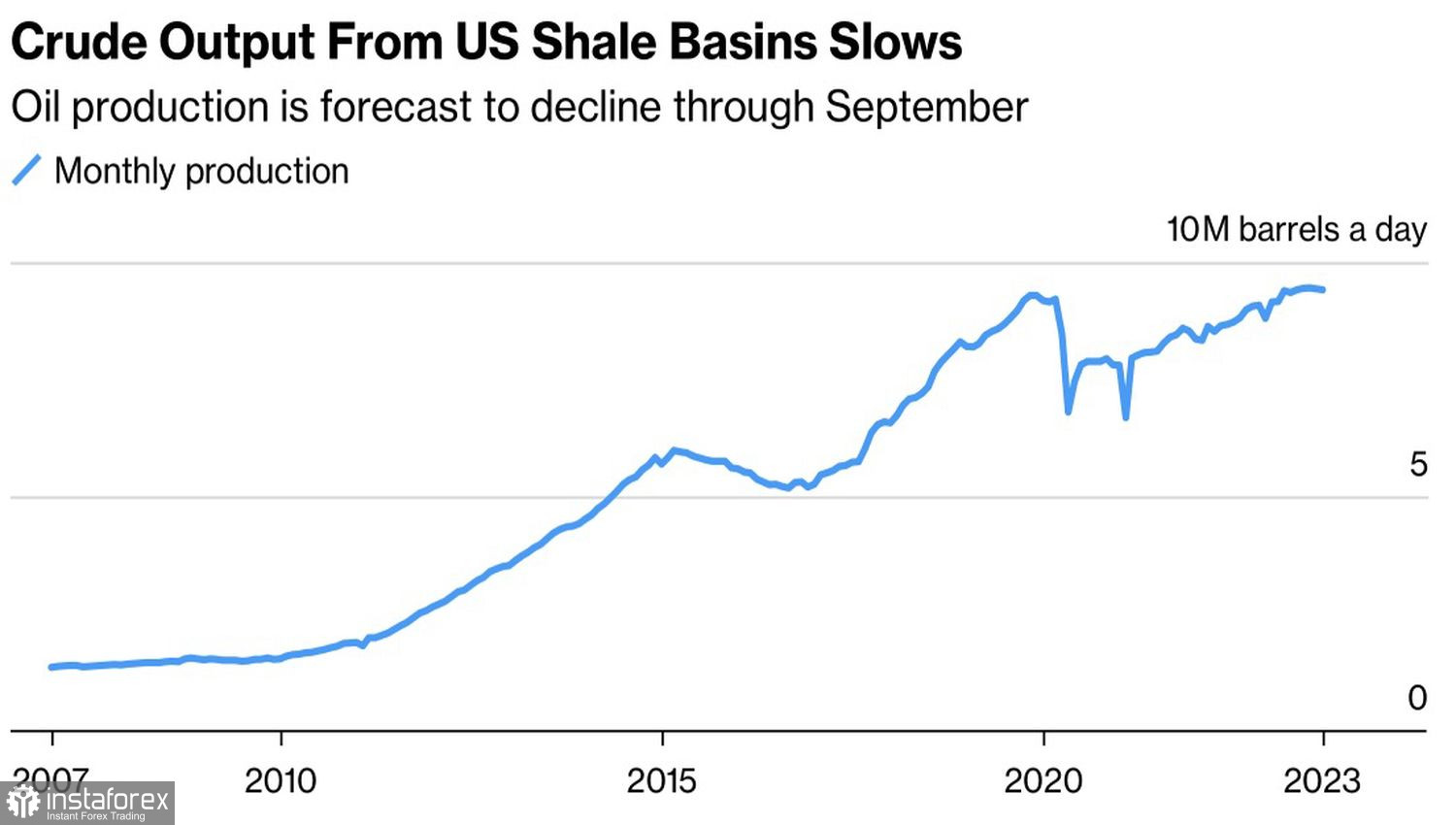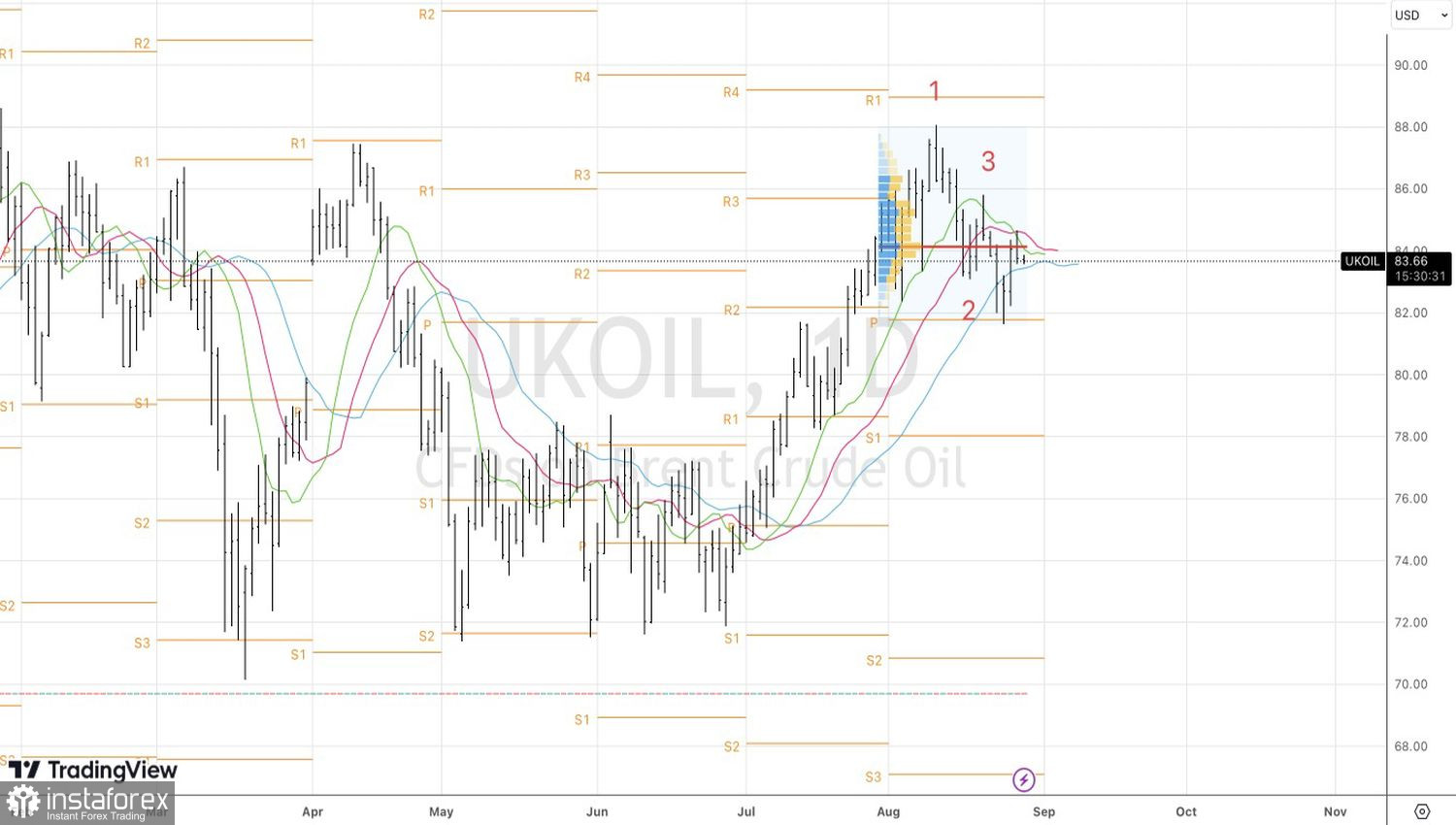Oil closed in the red for the second consecutive week due to concerns about global demand. China, which was expected to account for more than 70% of growth in oil demand in 2023, delivered an unpleasant surprise. Its economy is recovering much slower than anticipated, and monetary expansion is leading to a weakening yuan and capital flight from the country's financial markets. Brent was under pressure, but the bulls are not planning to wave the white flag just yet.
In reality, deflation in China isn't all that bad for the global economy. It suppresses price growth in other countries, including the US. If it were different, a new wave of inflationary pressure would have forced the Federal Reserve to raise interest rates again. This would increase the risk of recession in the US economy and negatively affect commodity markets.
It's a different matter if China's deflation is accompanied by stagflation in Europe and a downturn in the US. Then we could talk about a global economic crisis, which is bad news for demand and oil prices. However, while the eurozone holds, and the US shows resilience to the aggressive monetary tightening by the Fed, it's a good time to focus on the oil supply.
Rumors that Saudi Arabia is extending its oil production cut by 1 million bpd until the end of October, as well as the gradual decrease in shale oil production in the US, inspire Brent enthusiasts. As does the approach of tropical storm Idalia to the shores of the Gulf of Mexico. This threatens power outages and could hit crude production.
Dynamics of oil production in the US

On the other hand, Turkey's intention to resume the operation of the key Iraqi pipeline as quickly as possible, as well as rumors about the easing of US sanctions against Iran and Venezuela, give optimism to the bears regarding the North Sea Brent crude. These events can increase the volume of oil production.

Nevertheless, in general, the market remains optimistic. The premiums between nearby and more distant oil futures contracts are increasing, indicating either high demand or concerns about supply. Take note that Fed Chairman Jerome Powell's recent emphasis on the strength of the US economy is encouraging for the US stock market and Brent. The upward rebound of the S&P 500 indicates an improved global risk appetite and creates a tailwind for oil.
Technically, on the daily chart of the North Sea crude, the corrective movement has been worn out. It was triggered by the execution of the 1-2-3 pattern. Brent is entering a consolidation phase, which is reflected in price fluctuations near fair value and frequently crossing moving averages. In such a situation, the basis for purchasing oil will be a renewal of the local peak at $84.65 per barrel. For a pullback to develop, there should be a breakthrough of the convergence zone at $81.8-82.1.
 English
English 
 Русский
Русский Bahasa Indonesia
Bahasa Indonesia Bahasa Malay
Bahasa Malay ไทย
ไทย Español
Español Deutsch
Deutsch Български
Български Français
Français Tiếng Việt
Tiếng Việt 中文
中文 বাংলা
বাংলা हिन्दी
हिन्दी Čeština
Čeština Українська
Українська Română
Română

